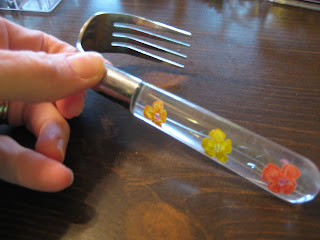I have a retro poster in my kitchen with a cheerful 50s
housewife saying “Drink coffee! Do
stupid things faster with more energy!”
Today I decided to test that strategy.
I had one child-free hour with Eden at preschool and Isaac napping, two
half-finished projects, and one leftover cup of coffee from this morning. I had a little extra motivation because it’s the last day of February (yay!) and I’m ready to wrap up my
February challenge.
Half-finished decluttering project before:
Half-finished decluttering project before:
 |
| This is "Isaac's room." |
 |
| Where's the floor? |
I realize this room probably looks farther from half-finished
to most people, but trust me, it was much worse. This room has become the dumping grounds for
anything I need to sort or that I haven’t chosen a place for yet. I’m tired of trying to keep the kids out of
it and having a room that we never use, so I decided to get this room in full
use. I’ve gotten rid of enough stuff
that this is now possible. I haven’t
finished sorting, but I’m going to put unfinished boxes in the basement.
Half-finished creative project before:
Half-finished creative project before:
This is a painting that I started years ago and abandoned. It was originally going to go in the bathroom but I’m going to change course and finish it for the kitchen. I’m using this tutorial for a copycat World Market print. Sometimes trying too hard to be original is overwhelming and takes the fun out of playing with art for me. And really, who is original anyway? Aren’t we all using the same materials and working with the same themes and inspired by other artists who are doing similar things? More on this in a later post…the simple version is sometimes it’s fun to be a copycat.
So, one hour.
It was amazing. Time stood still and I totally finished both
projects with time to spare.
Ha. Here’s the after
one hour snapshots. Keepin it real:
 |
I got on a roll with the room and spent most of my time
there while I was waiting for my branches to dry. (And I should've included a photo of the pile of boxes that I basically just moved outside the room into the hall, waiting to go down to the basement or be stored.)
Painting tip: Don’t pour all
of your paint at the beginning, because you have to wait for the branches to
dry before doing the swirly circles. (And if you're painting the background, you'll have to wait for that to dry before doing the branches. This is probably obvious to people who spend more time with a paintbrush in their hand than I do.) And
you have to wait for picking your daughter up from preschool. And going to Home Depot for a rug for the
room project. Surprisingly, even after
all that time the paint was still usable after stirring it a little bit.
And here’s the real afters:
after one trip to Home Depot, one more hour of kids watching tv, and one
hour of Kasey installing things into our crazy brick and lath and plaster and
paneling walls.
 |
| "Measure Me" growth chart made by Grandma Fran on the far wall, finally hung permanently! |
 |
| The rug is a cheap indoor/outdoor one from Home Depot, and warms up the floor nicely. |
I’m so excited for the kids to have a space to spread out trains and blocks and someday, legos (when I’m brave enough to get Kasey’s old ones out) without having to worry about people stepping on them because it’s a throughway. It’s finally looking like Isaac’s future room, rather than a storage space.
It’s not completely dry yet and so not quite finished (needs to be put in frame and hung above the stove), but I’m happy with how it turned out. I was trying to figure out if it felt finished and had enough circles on it, and then it was decided for me when it was dinnertime and I had to clean it up, since my art studio was the kitchen floor.
So, the moral of the story is that everything takes longer
than you think it’s going to, especially with kids. But really, using that one hour gave me the
momentum to finish a couple things, and you gotta start somewhere. And coffee is always, always the answer.
Tomorrow brings March, and I’m relieved. The average high temperature in March in
Cleveland is 47, which is 9 degrees warmer than February’s average. Plus March just sounds springy. I’m not “done” with my decluttering and
creative projects and rooting out consumerism from myself and my home, but I’ve made good progress and it’s given me something to
focus on in my least favorite month of the year. Here’s to daffodils and muddy boots, fresh
air inside and more time outside!






















